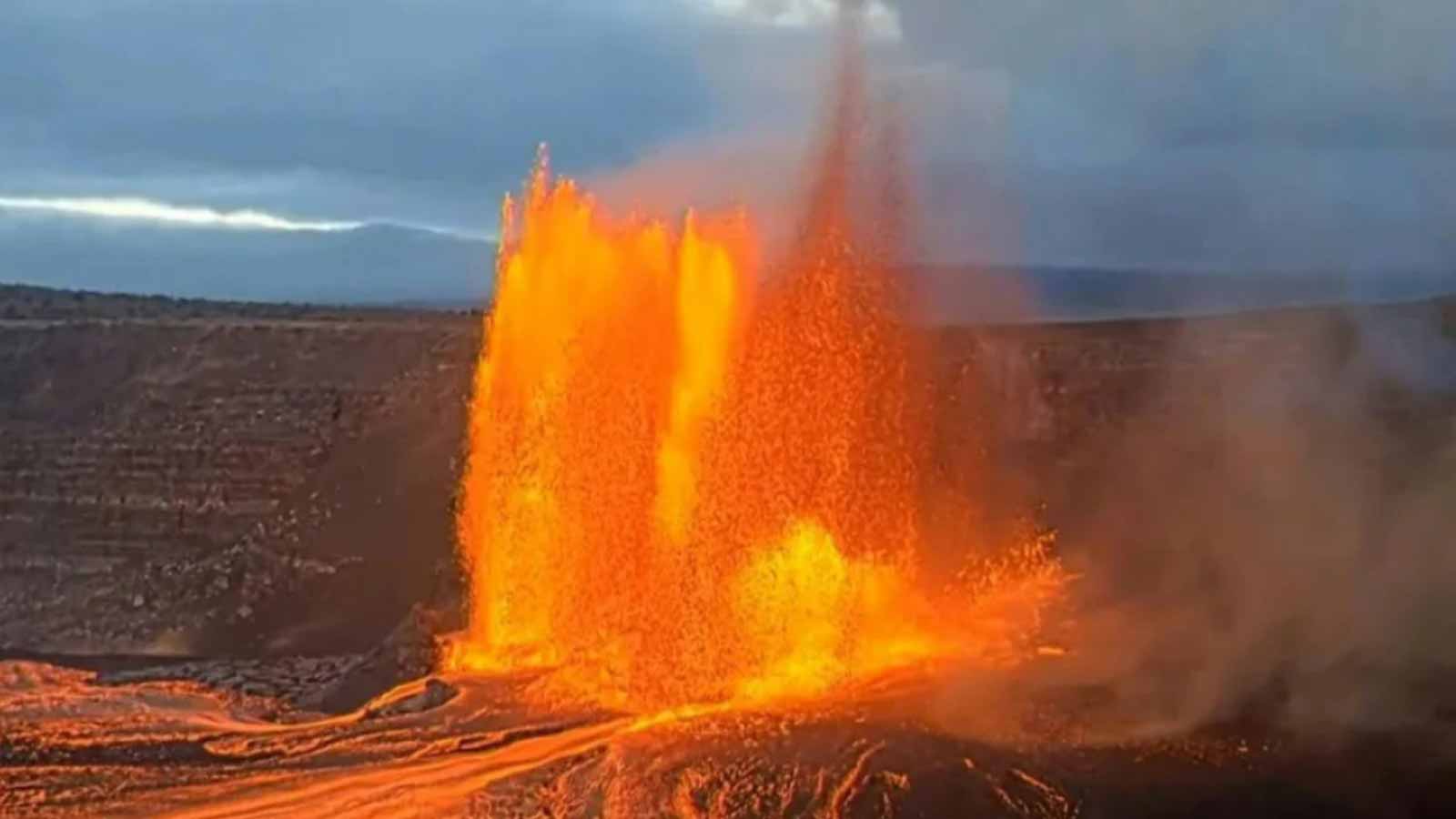In every crackle and glow, Hawaii eruption news reminds us that beneath paradise, the planet is unceasingly forging its own masterpiece.
Hawaii eruption news Hits the Headlines
Lava exploded skyward on May 25 at Kīlauea like a backstage flame effect. That’s the latest Hawaii eruption news I’ve been sharing with friends. People from all over paused their routines to watch the glowing arcs. It felt like a living painting shifting in real time. Many notes landed on the scale and roar that rose from the crater. Photographers swapped camera angles to frame streaming lava in soft dusk light. Local guides hurried along park roads to share views with eager visitors. Stationed in Hawaiʻi Volcanoes National Park, I could smell warm sulfur.
The air tasted of old stone and fresh excitement mixed. At 4:15 p.m., thin jets began spouting from the north vent. Witnesses cheered as molten rock shot hundreds of meters skyward. The first burst lasted only minutes but left jaws dropped wide. When the south vent joined in, things got wilder. Molten columns danced across a night sky dyed orange. This eruption felt alive, almost playful, but also raw and fierce. Words like ‘intense’ or ‘record-breaking’ floated online, but they barely scratch the feeling. I sat by my laptop, eyes glued to the livestream, heart racing. Every shutter click sent a thrill through the digital feed. Nothing in recent months matched this fiery spectacle. Kīlauea has a reputation for surprises, sure, but this one stunned.
Goodbye Pepsi: Costco makes a major decision that completely changes its strategy with sugary drinks
How detonating a nuclear bomb could protect planet Earth
Lava Fountains Reach New Heights
In the heart of Halemaʻumaʻu, fountains turned into monstrous geysers. They shot molten rivers into fading daylight. At one point, flames soared nearly 1,000 feet. Eye-witnesses strained up, necks craned, caught in awe. Those words echo in every report on Hawaii eruption news, and they describe molten jets reaching 300 meters. Thin streams of lava fanned out like ruby lace. At the same time, a second vent on the south rim unleashed its own pyrotechnics. That one roared at about 250 meters high. Scientists chatted through headsets, marking fountain heights and flow rates.
USGS experts tracked the fountains for over six hours. Each burst painted the crater floor with fresh pools of glowing rock. Red ribbons of lava snaked toward old lava fields, lighting them anew. Creatures of the night scuttled away as the ground hummed. Tour buses lined up at designated viewing stops, engines humming softly. Volunteers handed out maps and safety reminders to cautious tourists. Meanings of ‘active’ and ‘alive’ changed under that fiery sky. The crater felt almost like a giant forge, forging new earth. Nothing about these fountains looked aged or routine. Each jet pulsed with unpredictable bulges and bright embers. That raw energy is the nuance you see in every Hawaii eruption news broadcast.
Ash, Gas, and Ripples Beyond the Crater
A glowing mountain is stunning, but its breath can reach far. An ash plume climbed almost 1,500 meters above the vent. That black column held hidden dangers. Reports on Hawaii eruption news often highlight ash plumes that travel miles. Fine volcanic glass called Pele’s hair drifted downwind. It looked fragile like spun gold at sunset. It can irritate skin and sting eyes without warning. Air quality sensors hummed warnings to nearby towns. At elevated gas levels, folks felt scratchy throats by evening. Some kept masks handy while walking quiet streets. Health officials reminded residents to stay updated.
Gas emissions carried sulfur dioxide that can make lungs ache. Particles settled on cars overnight, sparkling under streetlights. By morning, delicate strands fluttered across doorsteps. Tour operators offered sealed windows and filtered systems. Children pressed faces against glass, curious despite the risk. Every report on Hawaii eruption news links dramatic visuals to real concerns. Researchers watch wind shifts closely, ready to alert residents. Nature’s show comes with a reminder to stay alert and respectful. That sharp contrast adds a human layer to raw spectacle. And yes, you can feel that tension while watching Hawaii eruption news.
Hawaii eruption news: a rhythm of Fire
The recent blast fits a familiar pattern. Kīlauea has been waking weekly since late 2024. Each flare up feels fresh and unpredictable. Scientists call these ‘summit eruptions’ but their language stays dry. Watching Hawaii eruption news feels like joining a weekly front-row seat. On May 16, a smaller fountain teased the crater floor. Then it quieted down almost as quickly as it began. That brief show wasn’t as wild as the late-May display.
Buys a coal mine for $2 million and discovers metals worth up to $36 billion
If you remember these 10 moments from decades ago, your memory is sharper than most in their 70s
Geologists track each episode, looking for shifts in magma flow. They share data in lively maps and real-time graphs. Local communities brace for rumble and rumble again. School announcements and park updates ping phones at odd hours. Tourists juggle excitement with caution every visit. Some local artists sketch lava against tropical backdrops. That art captures both heat and hope in vivid strokes. Scientists haven’t spotted signs of a larger eruption yet. Still, every blast reminds us that this island writes its own story. People plan picnics with a side of lava show. Something about raw earth in motion sparks deep curiosity. Kīlauea will keep dancing its fire dance for now.
